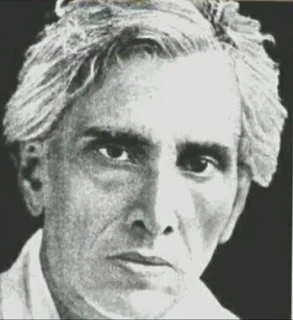Unbeatable Fiction Writer Sharat Chandra Chattopadhyay
Birth and family
Education life
After completing an entrance exam in the second division in 1894, Sarat Chandra Chattopadhyay was admitted to Tejnarayan Jubilee College. At this time, he used to recite Surendranath and Girindranath, two sons of his grandfather, Aghoranath, every night, in exchange for his money, Aghoranatha needed to pay for his college education. In spite of this, he could not sit for the exams to get the FA examination fee.
Exploration
At this time, when his father died, he returned to Bhagalpur and went to Calcutta after completing his father's funeral, where he got a monthly salary of 30 rupees for the English troupe of Hindi literature at the residence of Ukil Lalmohan Gangopadhyay of Calcutta High Court. During this time, he wrote a story called 'Mandir' and sent it to 'Kuntlin' competition and was declared the winner.
After spending six months in Lalmohan's house, Sarat Chandra went to the house of Rangoon in 1903, in the house of Lalmohan Gangopadhyay's brother-in-law, advocate Aghoranath Chattopadhyay. Aghoranath gave him a temporary job at the audit office of Burma Railway. After two years of his job, he moved to Pegu with his friend Girindranath Sarkar and lived there in the house of Abinash Chattopadhyay. With the help of Manindranath Mitra, Deputy Examiner of Burma Public Works Accounts office in April 1906 Sharat Chandra got his job in Rangoon and worked for the next ten years.
When Sharat Chandra returned to the country with a month off in October 1912, Phanindranath Pal, editor of the newspaper 'Jamuna', urged him to send the text for the magazine. Accordingly, Sarat Chandra went back to Rangoon and sent the story of Rama, which was published in the Jamuna newspaper in 1319 Bachabuna and Chaitra number. Then he started writing the text for 'Bharatabarsha'. Phanindranath Pal published his novel Baradidi. MC Sarkar and Sons and Gurudas Chattopadhyay and Sons published their novels in book form. In 1916, Rangoon resigned from the Sarat Chandra job due to his negligence with the authorities and returned to Bengal.
Marital life
Last life
In 1978, the houses of all the villages were destroyed as well as the houses of floods. The house of Sharat Chandra was also surprisingly saved from the clutches of transformation. Until the window was found in the brick-cement, there was some damage but did not fall. After being repaired and maintained by the government initiative Later, Sarat Chandra lived in Shibpur. The road from Shitalpur Baititala to Chatterjeehat is in the name of Sarat Chandra. In 1937 Sarat Chandra was often ill. At the doctor's advice, he returned to Calcutta after spending three or four months in Deoghar for health and then got sick again.
This time he was diagnosed with liver cancer, which spread to his stomach. Bidhashchandra Roy, Kumud Shankar Roy, etc., gave his opinion in favour of his surgery. For treatment, he was first given a European nursing home in Suburban Hospital Road, South Kolkata, and later on in Park Nursing Home, located 4th Victoria Teras. On 12 January 1938, surgeon Lalit Mohan Bandyopadhyay surrendered to his body, but the latter was not done. After four days, on January 16, Sharat Chandra left the last breath.



